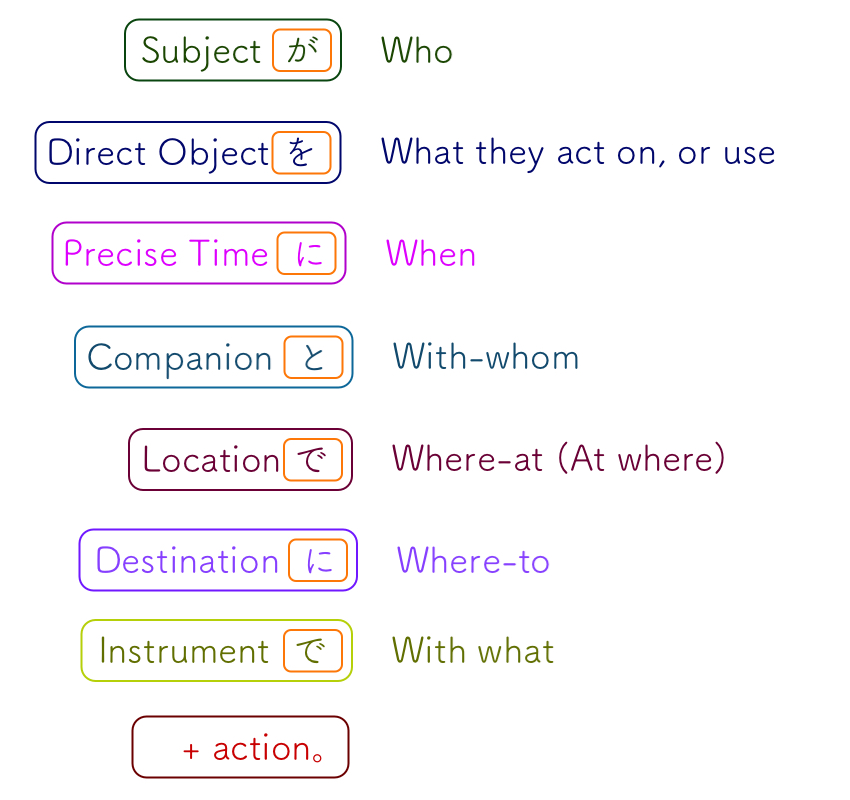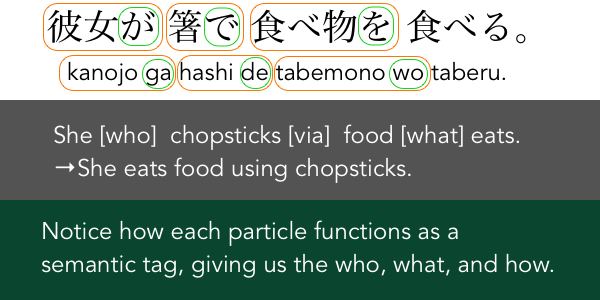Particles in Japanese are written in Hiragana and indicate who, what, when, where-to, where-at, how, and so on, akin to the W-words in English.

Let’s look at a concrete example:

Particles are how the role of each element in a sentence is indicated. You can get a nice primer on the different meanings of the particles in our free guide, Essential Japanese: The Mental Model [pdf].

Learning Japanese is fun! One retrains their brain and language reflexes to anticipate particles after the focal terms, as opposed to before as in English.
“To the store” becomes “store Ni” and “With a friend” becomes “friend toh.” The simple swap from before-a-word to after-a-word takes training, and is 100% attainable with practice and study.
As mentioned above, you can get a nice primer on the different meanings of the particles in our free guide, Essential Japanese: The Mental Model [pdf] brought to you by Japanese Complete, Go All The Way.
